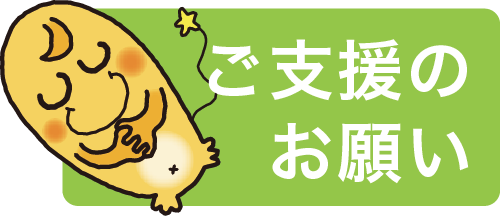|
|
||||||||||||||||
Symposium Ⅱ
“Animals Unlock People’s Hearts
~ CAPP Activities Exceed 15,000 Sessions”
Date: Sat.19th July 13:30 ~ 16:30
Venue: Waraku Meeting Room
Organiser: Society for Zoonoses Research
Purpose: JAHA (Japanese Animal Hospital Association) began its Companion Animal Partnership Program (CAPP) in 1986. Since then it has provided AAA (Animal Assisted Activity), AAT (Animal Assisted Therapy) or AAE (Animal Assisted Education) on more than 15,000 separate occasions across these three fields. Through such activities it is clear that even regular companion animals living in ordinary homes with their owners (the volunteers) can make a major contribution to the people’s welfare, medicine and education.
CHAIRPERSON’S MESSAGE
Hirohisa TOTSUKA
![]()
Chairperson, CAPP Committee, Japan Animal Hospital Association (JAHA)
The Japan Animal Hospital Association (JAHA) has been working to promote its Companion Animal Partnership Program (CAPP) to bring greater benefits to the public. The content of our different activities can be divided according to their ‘purpose’, which defines neatly into the following three categories:
• Animal Assisted Activities (AAA)
These are activities carried out for the main purposes of fostering emotional stability, recreation, improving quality of life, etc., through interaction with animals. Many of the activities generally termed “animal therapy” are of this type.
• Animal Assisted Therapy (AAT)
AAT is a professional therapeutic practice that involves using animals as a form of treatment carried out by healthcare professionals. Treatment goals are set according to the needs of the patients, such as improving mental or physical function, social function, etc. Then the most appropriate animals and volunteers (handlers) are selected and, following the treatment, the effects are evaluated.
• Animal Assisted Education (AAE)
AAE involves visiting elementary schools together with animals in order to help children to learn the correct way to interact with animals and to appreciate the preciousness of life. The number of schools introducing this activity as part of their life environmental studies or integrated studies program is gradually increasing.
I would be personally delighted if this workshop can help the participants deepen their understanding about the above mentioned three activity categories, as performed by CAPP. Then, after listening to everything we have to share, I would ask for everyone to positively support our CAPP activities.
People & Pet Partnerships ~ Benefits of the HAB
Thomas E. Catanzaro, DVM, MHA, LFACHE
![]()
CEO, Veterinary Consulting International
Animal Assisted Activities (AAA) are almost as old as mankind itself, yet it took Dr. Leo Bustad (co-founder of the Delta Society) to add the title Human Animal Bond (HAB) to the current interest in therapy and companion animals (circa 1981).
HAB can be defined as the unconditional love that exists between animals and humans; this is a term we often use to define how animals enhance our lives. Animals have no ulterior motives within this HAB paradigm, although some attribute this to the food and shelter aspect; yet life experiences show us this is not the key link-pin.
When animals decide to relax, they do it with body, mind, and soul; most humans cannot compete with that relaxation commitment. It goes a step further, since for animals, stress is just a flight or fight stimulus; while humans on the other hand, question their own existence and the existence of others around them. It becomes evident that these features play an important role in AAA, AAT, and other HAB relationships.
This seminar will explore how animals help us keep our spirits up, how they facilitate quality of life for people during their golden years, how they teach us to live for the “now”, and how they participate in a giving relationship with us in daily life.
Animals have an ability to listen without judgement; very few humans can achieve this state of acceptance in any relationship. We see the family dog coming back as a friend even after being neglected or accidentally kicked or bumped. In some cases, it is the presence of an animal that gives the human comfort, and that is a magical aspect of the HAB. We especially see this response when dealing with PTSD soldiers returning from a combat zone; allowing these soldiers to train an animal as a companion, or as a therapy animal, greatly mediates the stresses of the PTSD soldier. We see therapy animals giving up their inherent freedom for the benefit of their human counterpart, never complaining, just giving. That is the HAB in action!
About Allergies
Koji YAMAOKA
![]()
Director of Yamaoka Pediatric Allergies Clinic
Dogs and man have been friends since ancient times. And now, in Japan, the number of dogs living with people will soon equal the number of children under 15 years old. In recent years, many households now allow the family dog to live indoors with them and, as a consequence, allergic reactions such as nasal inflammation, conjunctivitis, asthma and hives have become problematic. The causal allergen is called ‘Can f1’ which, while not found in the fur of the dogs, comes from their dandruff, saliva and urine. Another cause of allergies resulting from keeping dogs is the increase in mites. Mites can cause skin problems for the dogs so that when they shake and scratch they disperse even more dandruff than usual.
The number of people happy to live with a dog despite their allergies is increasing, and these people make various efforts to reduce the allergens. They shampoo their dogs regularly, don’t allow them into the bedroom, change clothes after playing with their dogs and, where possible try to keep a female, etc. More general measures to counter mites, such as avoiding wool products or dropping clothes on the floor, are also effective.
Even with such efforts, there may still be strong allergic reactions. In such cases, medical treatment may be necessary so it is advised to consult an allergy specialist. It may not be the adult owners themselves but their children who suffer strong symptoms, in which case the owner must do everything possible to help their children.
There are situations when children in hospital have the opportunity to communicate with dogs. Even if the children have a history of allergies, these visits are possible so long as certain precautions are followed. For example, they should not let the dogs lick them and wash their hands after touching them, etc.
The Japanese Society of Allergology reports that ‘it is not encouraged for children with atopic constitution to have pets’. But if they already keep a pet, just giving the pet up does not improve the situation. Finding ways for them to be able to live together is more pragmatic and beneficial for everybody’s happiness.
Dog Visits to a Pediatric Cancer Ward
Yuri OKIMOTO
![]()
Medical Doctor, Head of the Department of Hematology and Oncology, Chiba Children’s Hospital
For pediatric cancer, the recovery rates at present are 70~80%. In Japan, pediatric cancer treatment requires patients to spend an average of about one year in hospital.
This year, Chiba Children’s Hospital is marking its 27th anniversary. During the second half of this history, the disease-fighting environment in which the patients live has improved significantly due to the provision of nursery teachers. In the case of the hematologic ward in particular, there has been a huge increase in the amount of time the children spend engage
d in fun activities. This has been the case since 1997 when Fumiko Inoue (who herself had to raise a child suffering from cancer) began visiting the ward every week as a volunteer.
In the autumn of 2003, at a conference of the Japanese Society of Pediatric Oncology, we saw a presentation about dogs making visits to hospital wards given by a member of staff from St. Luke’s International Hospital. This prompted us to contact the Japan Animal Hospital Association (JAHA), and after a preparatory period of about a year, we began our own CAPP activities in March 2005.
As you might expect, the dog visits are far more than simply fun times for the children. For instance, the children learn many different things such as the fleetingness of life, the spirit of caring for the weak, about living things in general, food matters, how to greet volunteers (and other people), and about having a sense of gratitude towards the volunteers, etc. Teachers at a special support school give up part of their class time in order to take part in this activity. The specific CAAP activities we use at Chiba Children’s Hospital are AAA (Animal Assisted Activities) and AAE (Animal Assisted Education).
Since the dog visits to our hospital actually began, the results have been even better than we originally anticipated. The children are delighted by their contact with the dogs and this makes the children’s parents happy too. All this then makes our staff happy as well – so it has created a virtuous cycle. So far, we have never had an accident, nor even a single allergic reaction. I will introduce some scenes from the activities during my presentation.
I believe that the reason why we have been able to continue this activity for such a long time is that we have volunteers to handle the coordination, management and recording of the activities. It is also due to having teachers from the special support school adeptly incorporate the activities into their classes. I have an overwhelming sense of gratitude to the dogs and their owners who visit us on a completely voluntary basis, and to all the people who continue to take part in these CAPP activities.
What type of animal takes part in AAA, AAT or AAE activities?
(The standards required of the therapy dogs, etc. ).
Hiroko SHIBANAI
Advisor, Japan Animal Hospital Association (JAHA),
Director, Akasaka Animal Hospita
Based on the Human Animal Bond (HAB) policies, a set of common worldwide standards are applied to volunteers and animals participating and cooperating in Animal Assisted Activity, Therapy, and Education.
1. Companion Animals Standards
The most important factor within any social activity requiring animal assistance is to ensure that the welfare and health of the animal is secured.
1) Participating Animal Suitability
・must love people.
・always calm in all situations.
・not distracted by other animals.
2) Managing Health of Participating Animals
| Animal Assisted Activity (AAA) Standard | Animal Assisted Therapy etc. Standard |
|
|
3) Discipline and Training (Animals)
・must understand owner commands correctly and act accordingly.
・must have an everyday lifestyle, model to others.
・must be able to control excretion habits.
2. Standards for Handlers (Owners)
・always in good health as a volunteer.
・participates in lectures organized by the association.
・attends study seminars, etc.
Generally speaking, the most important factors in relation to an animal entering medical premises are its suitability (eligibility) and hygiene control. When taking an animal into a medical institution or hospital where it will come into contact with in low-immunity child patients or seriously ill people there may be particularly strict considerations and infection control measures specific to the institution. Of course accidents must never be allowed to happen and organizations, individuals or groups that are unable to be socially responsible regarding risk should not conduct such activities.
Statistical results for the Companion Animal Partnership Program (CAPP) activities by JAHA, conducted between May 1986 till March 2013, are as follows.
No. of visits : 14,626 No. of participating vets : 22,882
No. of volunteers : 115,654
No. of animals : dogs = 85,631, cats = 19,441, others = 6,712 (totals)
No. of medical facilities : 36
No. of facilities for the elderly : 253
No. of children related facilities (including schools) : 72
No. of facilities for mentally and physically handicapped people (and children) : 58
No. of accidents : 0 No. of allergy related problems : 0


